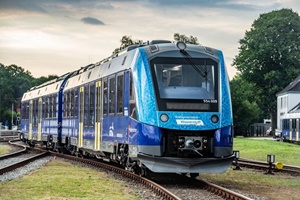A baby Chinese pangolin is being weighed at the Prague Zoo, Czech Republic, Thursday, Feb. 23, 2023. A female baby of Chinese pangolin has been born in the Prague zoo on Feb 2, 2023, as the first birth of the critically endangered animal on the European continent, and was doing well, the park said. (AP Photo/Petr David Josek)
PRAGUE (AP) — A Chinese pangolin has been born in the Prague zoo, the first birth of the critically endangered animal in captivity in Europe, and is doing well after initial troubles, the park said on Thursday.
For the first few days after the baby female was born on Feb 2, park keepers were worried because it was losing weight.
The reason was found to be that the mother, Run Hou Tang, didn’t have enough milk. Following consultations with experts from Taiwan, a program of artificial feeding with milk from a cat was introduced and the mother was stimulated to produce more of her own.
That turned things around with the zoo now expressing cautious optimism about the pup, which still has no name but has been nicknamed “Little Cone” because it resembles a spruce cone.
Prague received the rare animals from Taiwan last year, becoming only the second European zoo to keep the species.
Guo Bao, the male pangolin, and Run Hou Tang both came from the Taipei zoo, the leading breeder of the mammals that are hunted heavily for their scales and meat.
It’s estimated that almost 200,000 were trafficked in 2019 because of the scales that are used in traditional medicine in Asia and elsewhere.
The pangolins’ arrival in Prague came after relations with China became strained, among other reasons, after Prague decided to revoke a sister-city agreement with Beijing and signed a similar deal in 2020 with the Taiwanese capital, Taipei. That agreement also included cooperation between the zoos of the two cities.
Taiwan split from mainland China amid a civil war in 1949, but Beijing considers the self-ruled island part of its territory.The Czech government recognizes the one-China principle but Prague officials said they wanted to focus on cultural and other cooperation, not on politics. Source: https://yourvalley.net/

!role~Preview!mt~photo!fmt~JPEG%20Baseline)




